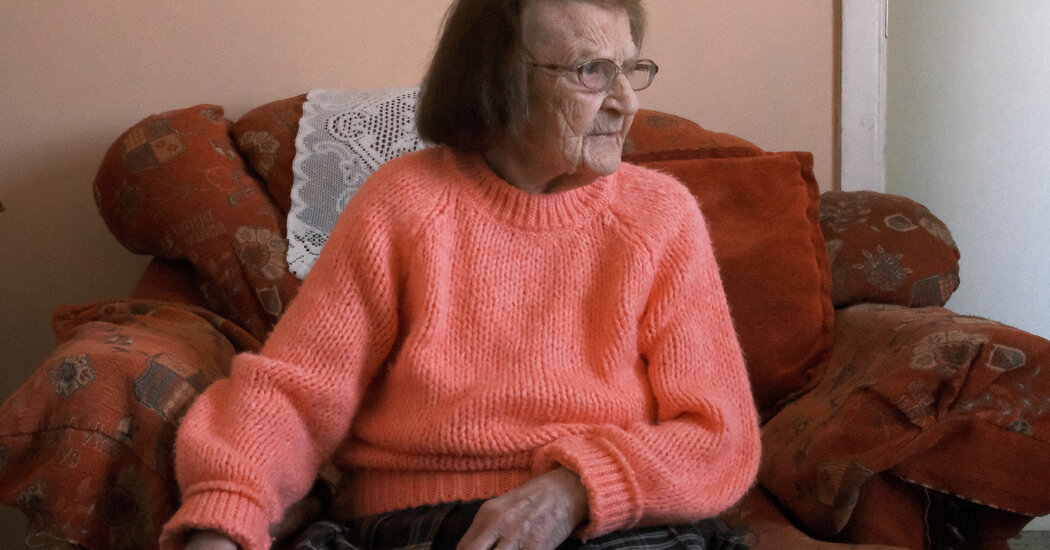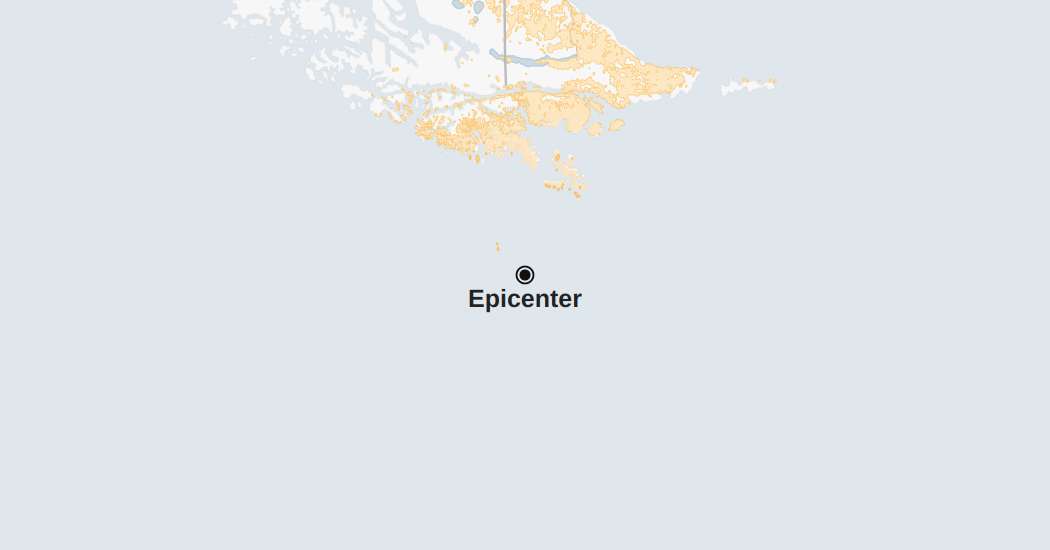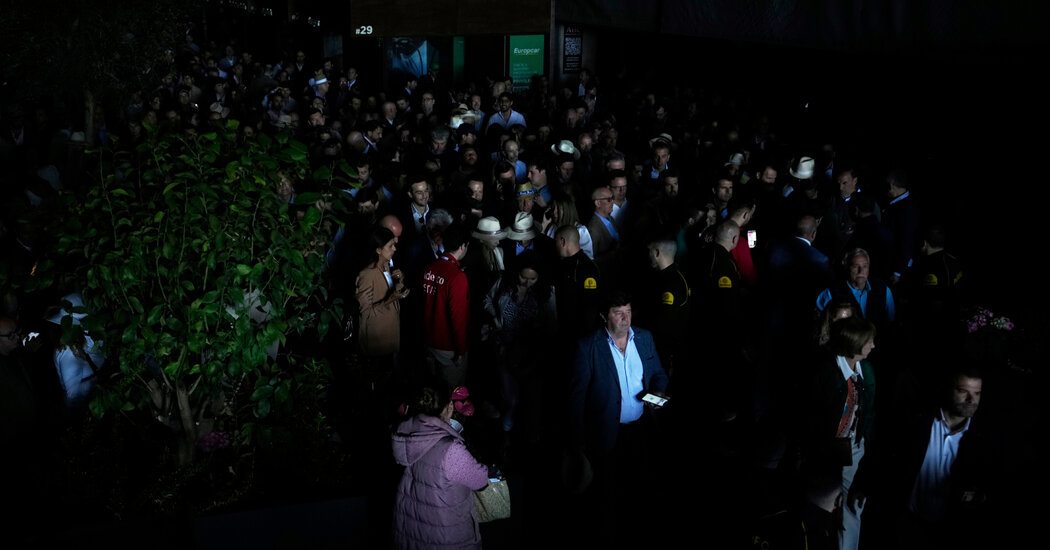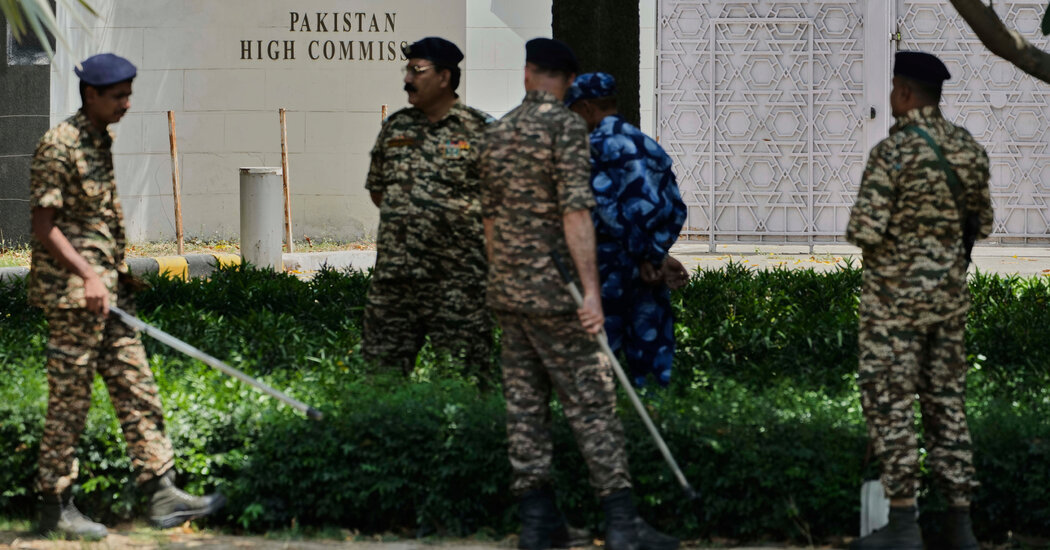The house is at the end of the road, nestled behind a playground in Loughrea, an ancient town in County Galway. Built of white stone with gray trim, it has lace curtains, a statue of the Virgin Mary and two small bedrooms, one pink, the other blue.
In the living room, a small, fragile woman in a plaid skirt sits in an overstuffed orange chair. She is 93 but lives alone, with an overweight mutt named Rex. Day after day, she busies herself with small tasks — praying the rosary, hanging the wash, letting the dog into the yard — while she waits for the return of the son she never got to hold.
She has been waiting for 76 years.
A Home of Shame and Secrets
As a teenager, Chrissie Tully fell in love with a man in her neighborhood, and in 1949, she became pregnant.
What happened next would follow a grim, common script in midcentury Ireland, where the Catholic Church and its rigid doctrine dominated nearly every aspect of daily life. Ms. Tully’s family disowned her; the town, Loughrea, spurned her. A priest took her to St. Mary’s Mother and Baby Home, a facility for unwed mothers in Tuam, 30 miles north.
Such institutions remain one of Ireland’s enduring moral stains. Independent panels have excoriated them, religious institutions have apologized for them, and the Irish government has bumbled through a redress scheme, seeking to financially compensate tens of thousands of Irish mothers and children who were banished to them.
Particularly notorious was St. Mary’s, an austere, gated structure that was once a military barracks and workhouse. Run by sisters from a French religious order known as Bon Secours, its grim reputation was so well known that locals avoided it and the fatherless children it housed.
Few spoke of the conditions within: forced labor for young mothers, high infant mortality rates, pervasive shame and emotional abuse. Still, for some like Ms. Tully, there was nowhere else to go.
On Dec. 13 of the year she arrived, Ms. Tully was rushed to the Galway Central Hospital with labor complications. She delivered a boy, born breech at seven and a half pounds. She wanted to name him Michael, but he was taken away before she had the chance. She never held him or saw his face.
“It nearly killed me,” she said.
Soon, the doctor returned.
“‘Baby’s dead,’” Ms. Tully recalled him saying. “They weren’t very nice about it.”
She had no way of knowing whether to believe him. The system was awash in shame and secrets. Some babies were adopted out to Catholic families as near as the same town, or as far as America. Others died in infancy and were buried in unmarked graves, disappearing into collective silence that shrouded the facility in Tuam, and others like it.
Mothers like Ms. Tully often weren’t told where their children had gone, or they were told half-truths. In some cases, mothers were told their babies had died only to find out later they had been illegally adopted, their birth certificates forged.
In a story with no shortage of cruelty, that is perhaps most searing: the lack of closure, the endless “what if.” For decades, Ms. Tully was left to wonder: Was Michael really born dead? Or was he out there somewhere, wrongfully believing his mother had abandoned him?
Ms. Tully could not accept that her little boy never made it out of the hospital, that his story began and ended in 1949. Perhaps it was irrational.
But a few years ago, she got a new reason to hope.
‘We Found Your Mother’
After losing Michael, Ms. Tully left the Tuam home and returned to her prior life. She also resumed her relationship with her partner, and four years later, she became pregnant again. But the father — who Ms. Tully said was “not the marrying type” — left her and moved to the United Kingdom. For the rest of her life, she has carried a torch. She never married.
With no alternative, she returned to the Tuam home. She gave birth to a second boy in 1954, naming him Christopher.
Trekking daily to the children’s ward at the home to feed and bathe him, Ms. Tully had a deep conviction: She had lost Michael, but she would not lose Christopher. She would find a job, take him from the Tuam home and build a life — mother and son, together, in Loughrea.
But Ms. Tully arrived one day to the boy’s bed and faced a “squinty-eyed” nun, who picked up the child and walked away, telling Ms. Tully she would never see him again.
Left with nothing — she and her family never fully reconciled — Ms. Tully stayed in Galway, working odd jobs in a cafe and later as a live-in housekeeper for a group of priests. She searched for her sons, but was stymied by byzantine adoption bureaucracies, much of them designed to keep those like Ms. Tully from answers.
Over time, Ms. Tully realized she might never live to find her lost children. She settled for leaving a letter with a confidante in Portumna, a Galway town on the Tipperary border, meant for her boys if they ever surfaced. In it, she had tucked 3,000 Irish pounds and an explanation for their separation, revealing that she had never given either of the children up, willingly.
Then, in 2013, a professional-looking woman arrived at Ms. Tully’s Loughrea home, and asked if she could come in for a cup of tea. Slowly, the stranger revealed her purpose: She was from an adoption agency that had been approached by a man from London in his 60s who was searching for his birth mother.
The man had no idea, but he was the boy Ms. Tully had named Christopher.
He was eager to reconnect, the woman said, but the decision would be up to Ms. Tully: Did she want to meet her second son, now known as Patrick Naughton?
“I loved it,” Ms. Tully said, of the revelation. “He’s all I have.”
On a summer day that year, Ms. Tully arrived at a small hotel outside Galway city. Mr. Naughton flew in from London, stopping at a supermarket on his way to pick up a bouquet of flowers. When he walked in, the small woman before him was so overwhelmed she could hardly meet his eye.
“Chrissie,” he recalled saying. “I’m not that bad lookin’, am I?”
Since childhood, Mr. Naughton, 70, had known that he was adopted, but he had never felt compelled to find his birth mother. He had spent his early childhood in Galway until his family moved to London.
“My adoptive parents were so loving,” he said. “I thought if I ever looked, I would be going behind their back.”
After they died, however, Mr. Naughton felt tormented by questions about his origins. Who were his birth parents? Did they have other children? Had his parents kept them, and if so, why not him?
He had searched for more than a year, and had mostly given up when he got a call from the adoption agency in Galway. “We found your mother,” they told him.
“I’ve come home every year since the day I found her,” said Mr. Naughton, who still lives in London with his wife, along with three adult children and a gaggle of grandkids.
It was a few years before Ms. Tully confided in Mr. Naughton that he might have a brother. When he heard, he was “over the moon,” he said — he had been raised an only child and couldn’t believe he might have a sibling.
In the years since, Mr. Naughton and Ms. Tully have pored over birth and death records, scoured graveyards and hospital paperwork. Through Ireland’s Freedom of Information Act, they finally obtained the other child’s birth record, apparently written in the hospital in Galway in 1949.
“Stillborn,” it said. Under Ms. Tully’s name: “Return to Tuam.”
It was the first official indication Ms. Tully had seen that Michael was indeed dead. It wasn’t clear whether “Return to Tuam” referred only to Ms. Tully, or included Michael, but the possibility that the baby’s remains had been sent there carried a grim weight of its own. In 2017, a mass, unmarked grave was discovered in a septic tank at St. Mary’s, which shut down in 1961. Within it were the bodies of at least 796 children.
Could Michael have been one of them?
For Ms. Tully, it seems impossible to know for sure what happened to the boy. She has still seen no clear record of his burial. And to Mr. Naughton, it’s implausible that a baby’s body would have been taken from the hospital in Galway to Tuam, 30 miles away, to be buried in a pit.
“I don’t know what to believe anymore,” Mr. Naughton said. “He has to be somewhere.”
Rosaries, and Dreams
So Ms. Tully has waited in her modest home, which she has rented at a subsidized rate from the Galway County Council for 20 years. As she nears 100, she and Mr. Naughton worry that Michael will return — however unlikely that may seem — to a house occupied by somebody else.
“I’d hate Chrissie to die, hoping that Michael will come back,” said Mr. Naughton, holding back tears. “And there won’t be nothing here.”
Hoping to keep the house in the family, he contacted Galway County Council to explore buying the home in Ms. Tully’s name. The house is valued around 110,000 euros, but according to Mr. Naughton, the Council said because of her time spent renting the home, Ms. Tully could purchase it for €50,000.
Still, because of their respective ages, Ms. Tully and Mr. Naughton have both been denied a mortgage. They have tried to raise the money on their own via an online fund-raiser. But the effort has fallen short, in part because they have struggled to navigate the online process.
On Ms. Tully’s mantle now is a collection of framed photographs, evidence of the last decade’s discoveries: in one, a beaming Patrick with his uniformed son; in another, great-grandchildren.
One photo sits off to the side. It is a recent image of Ms. Tully, bundled against the Galway rain, walking through an iron gate at the Tuam home. She stares at the camera, in front of a memorial that was installed for the babies found in the septic tank.
“We went to see if we could get Michael’s grave,” Ms. Tully said, looking over the photograph. “We couldn’t find nothing.”
At night, when Mr. Naughton sleeps in the pink bedroom, he hears murmurs from down the hall. It is Ms. Tully, praying the rosary for Michael, as she does every night. Not long ago, she called Mr. Naughton early in the morning, with news of a vision she’d had.
“I had a dream, and I seen him. And he is alive,” Ms. Tully said, at the time. “And nobody will tell me anything different now.”





